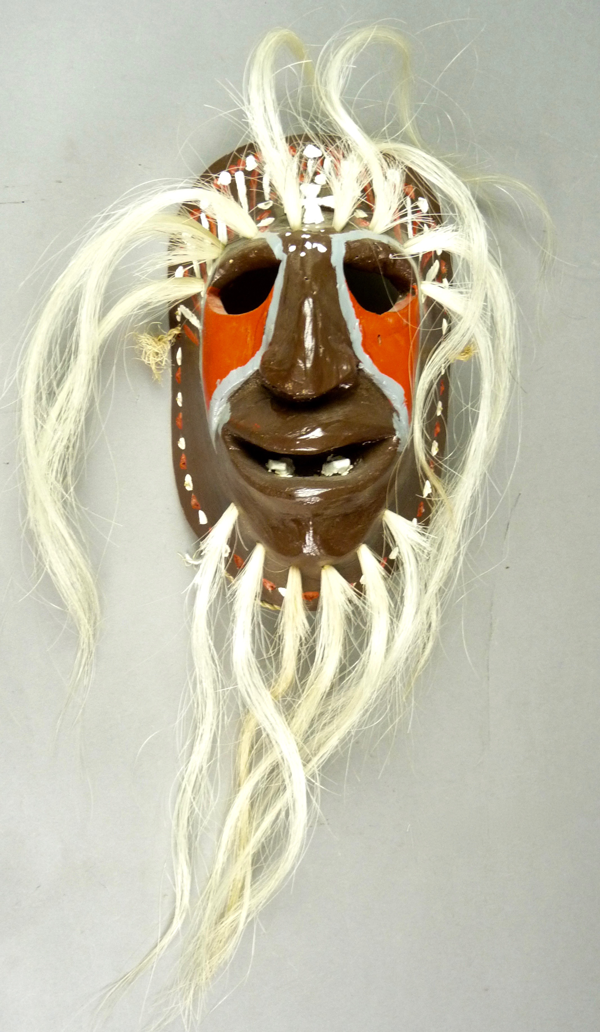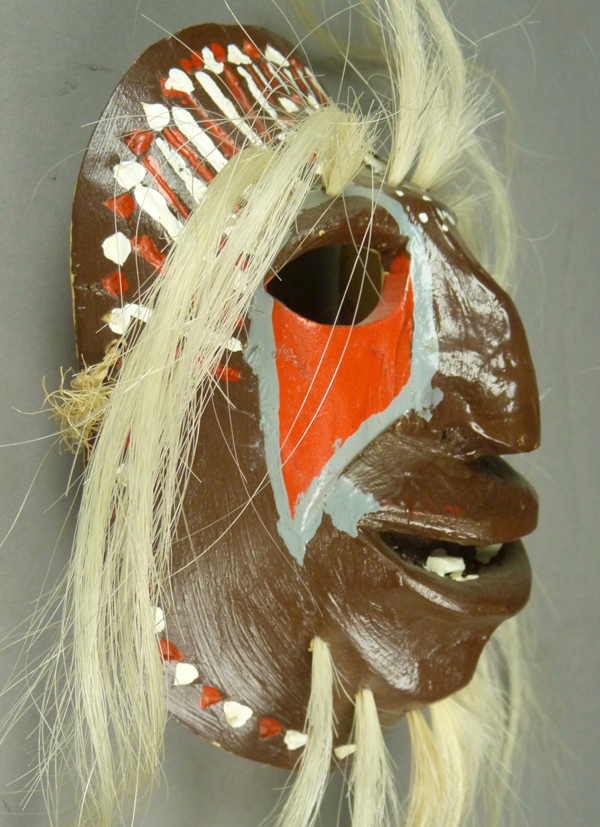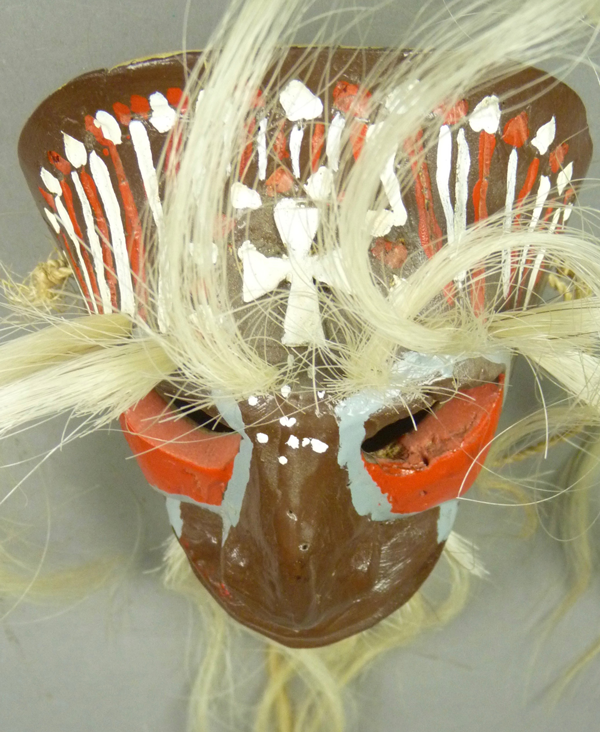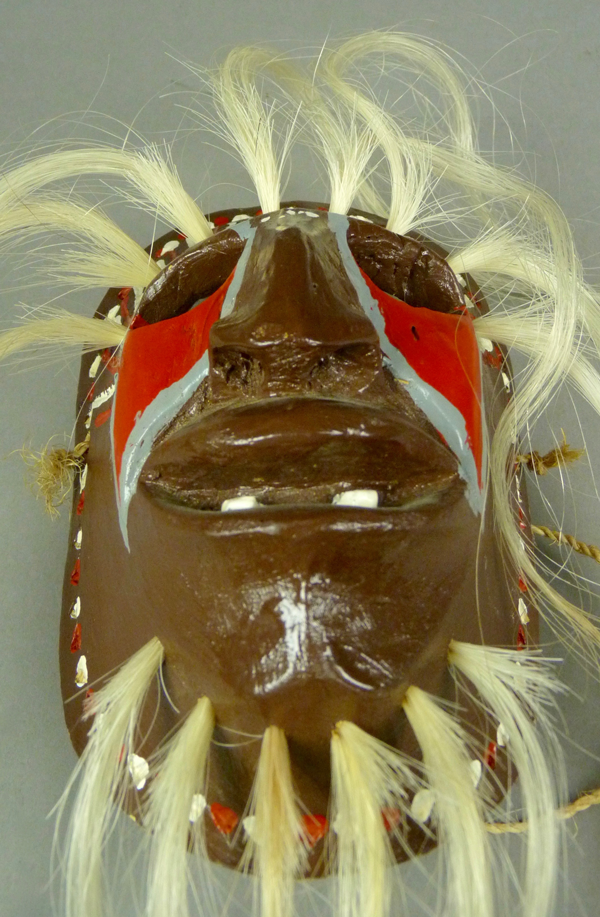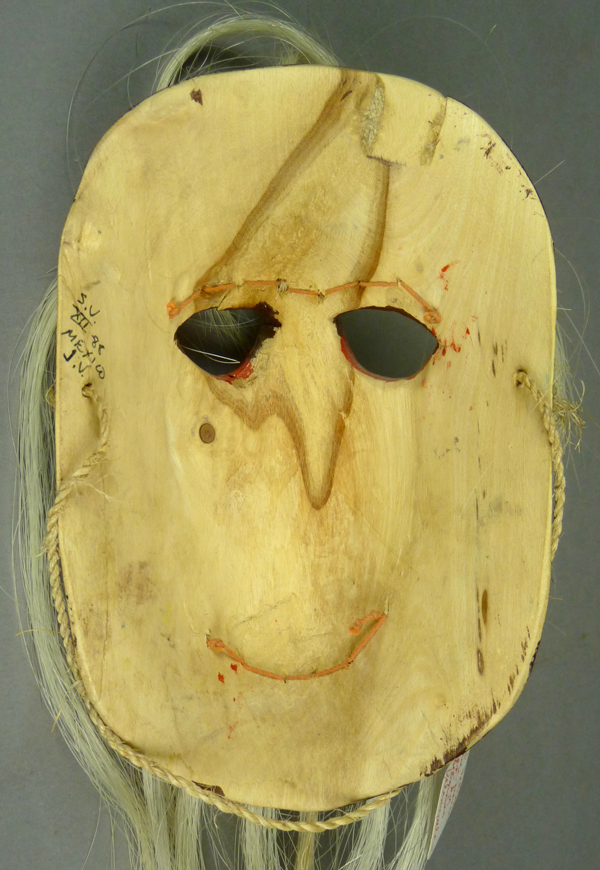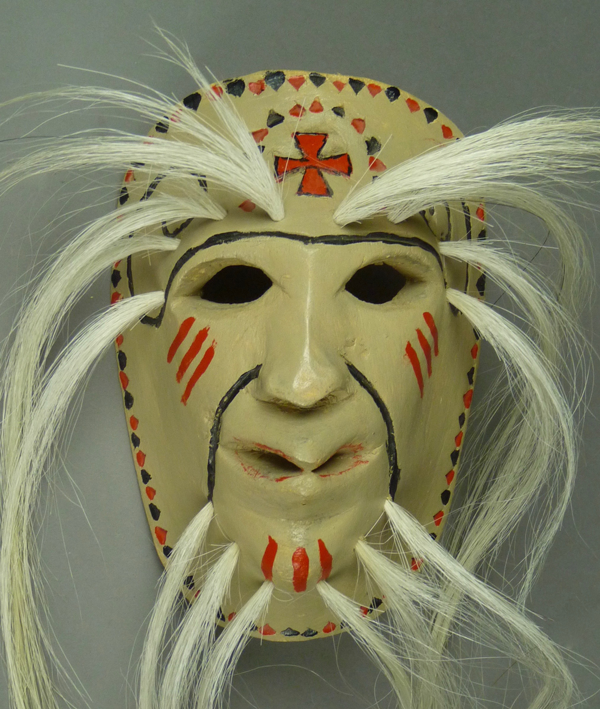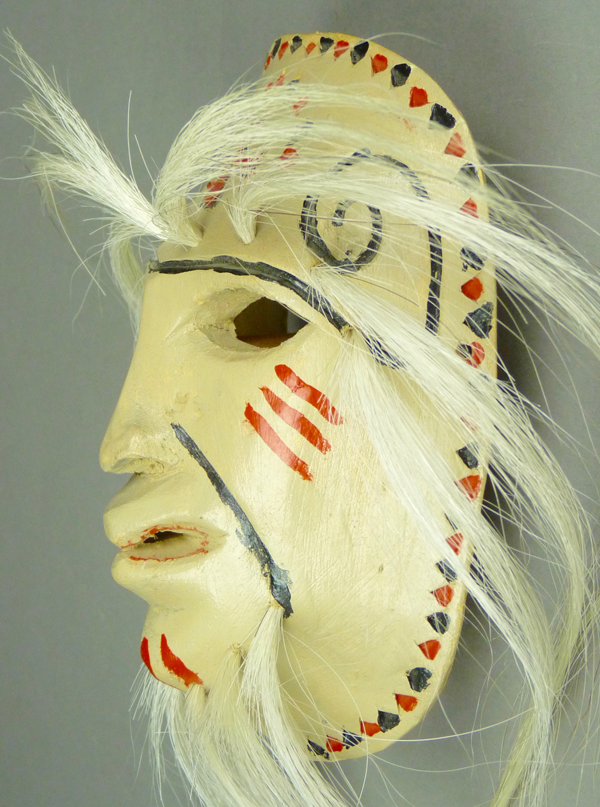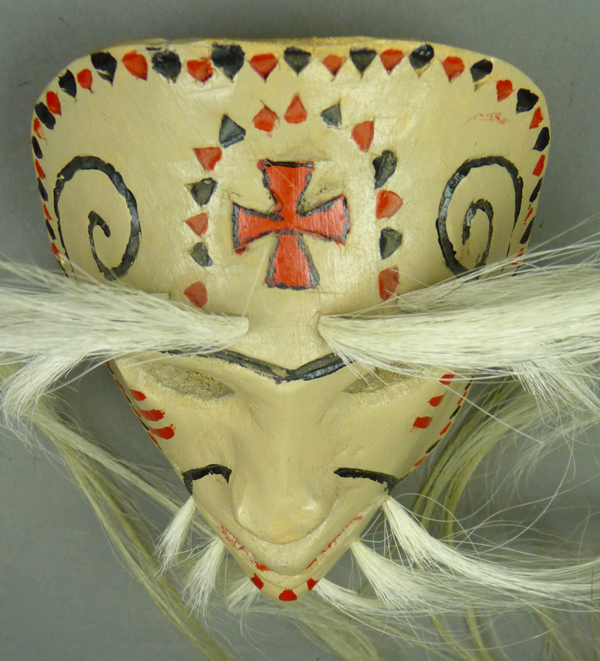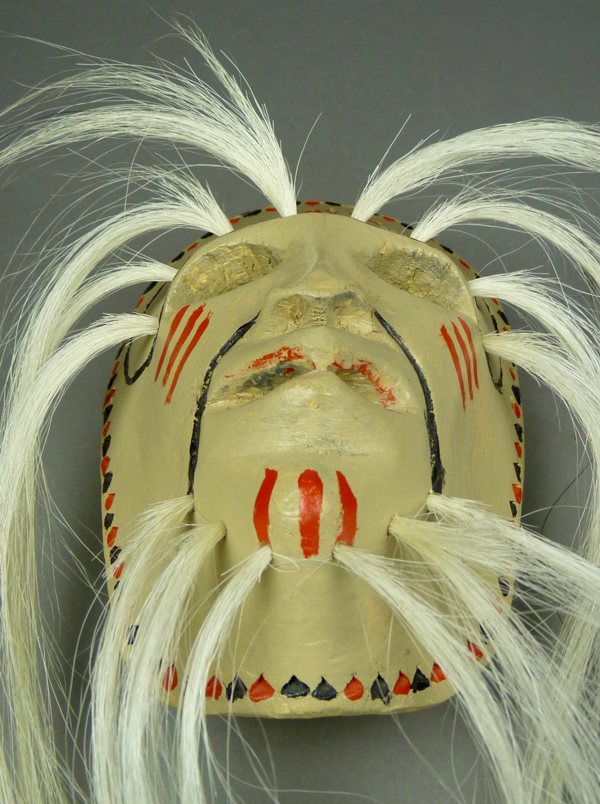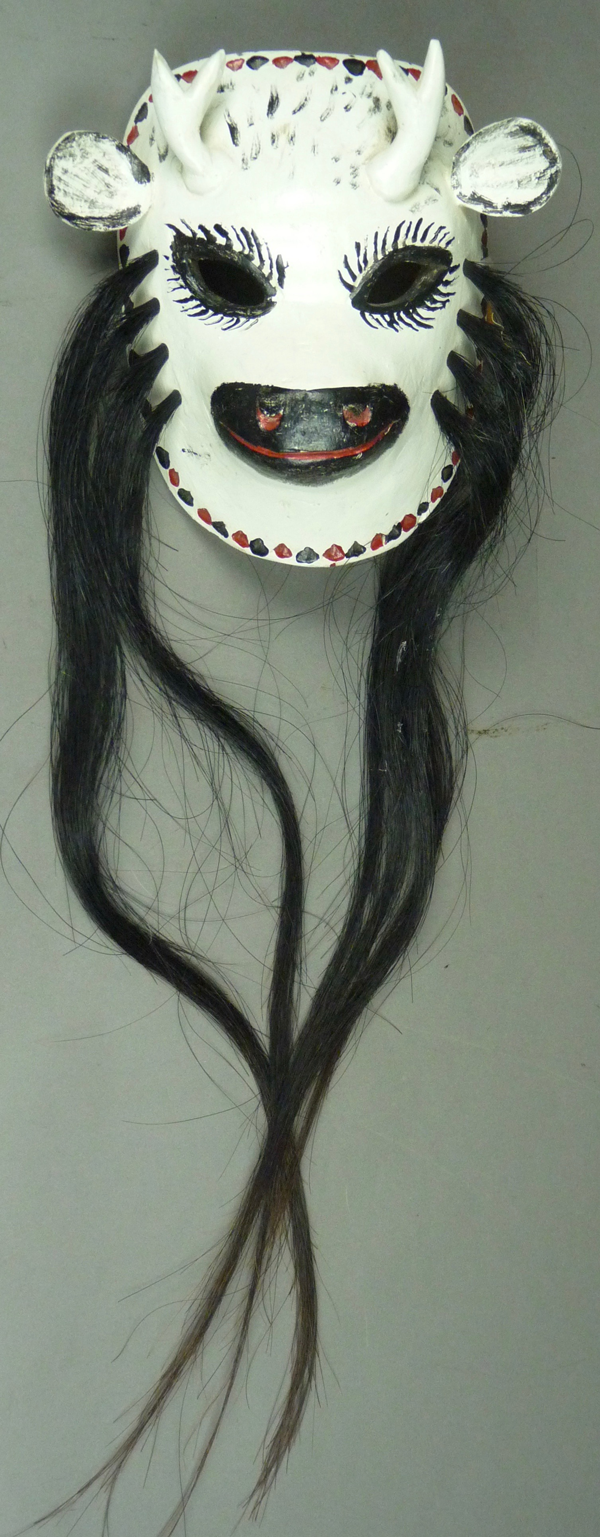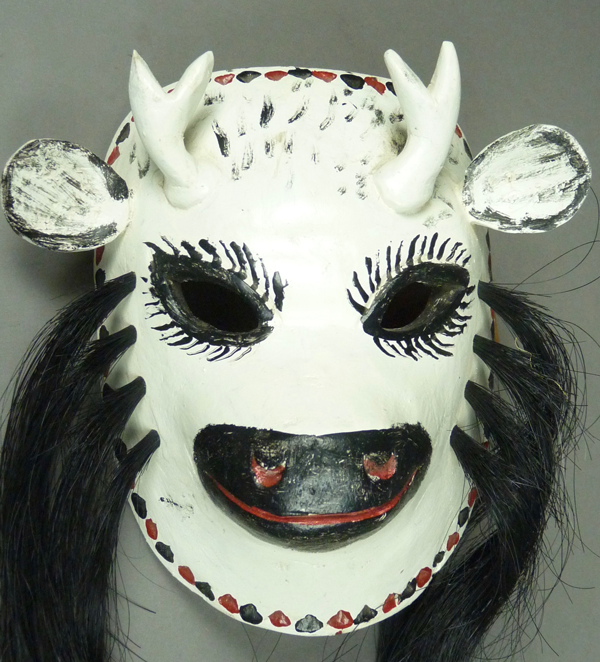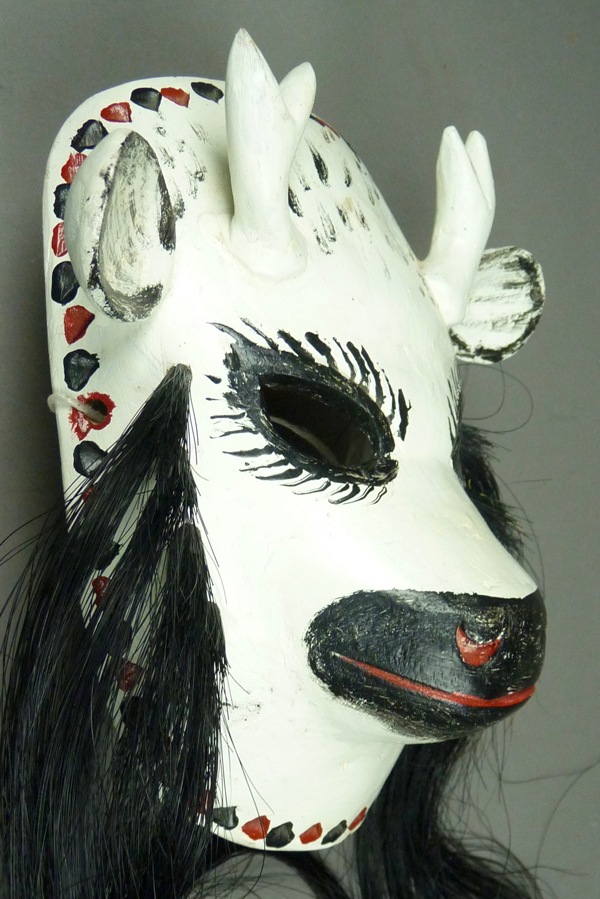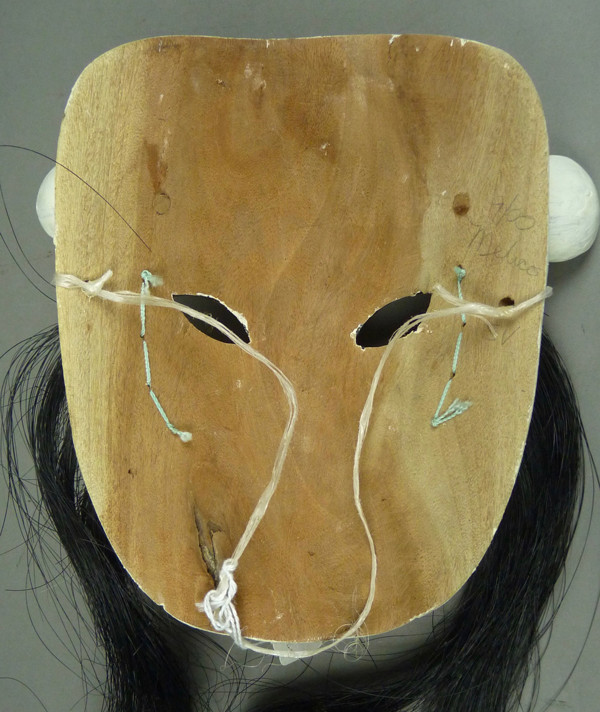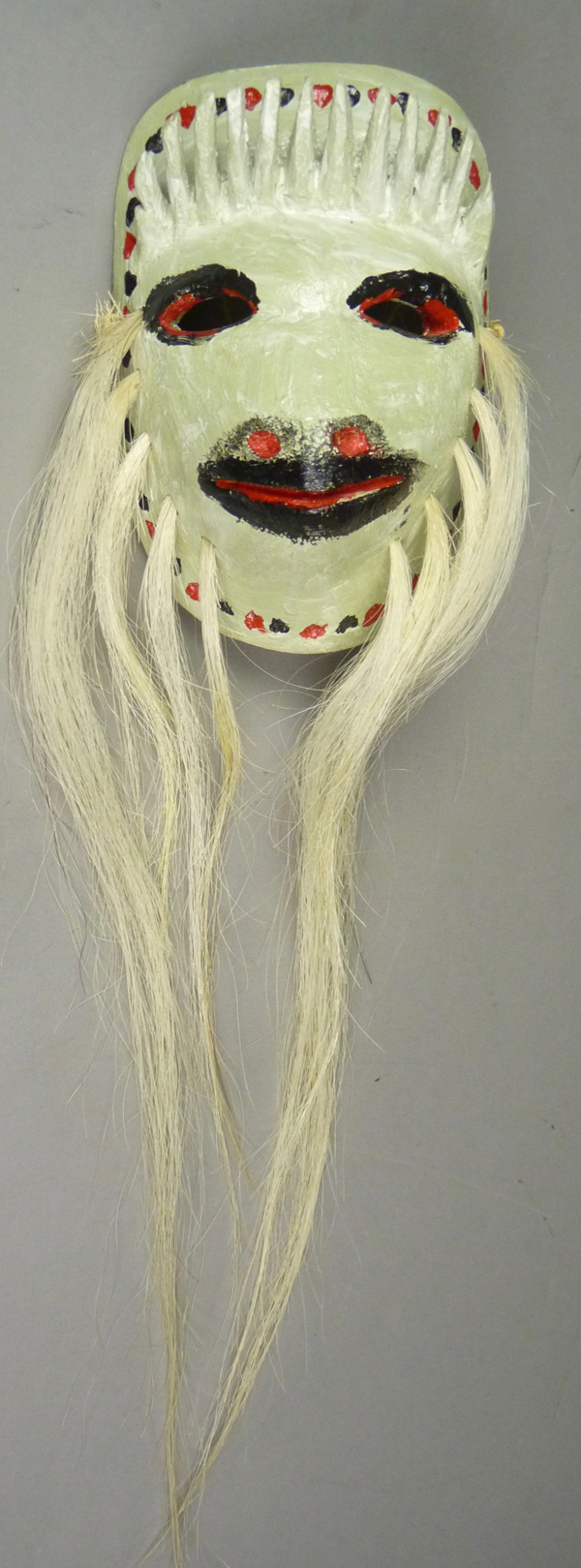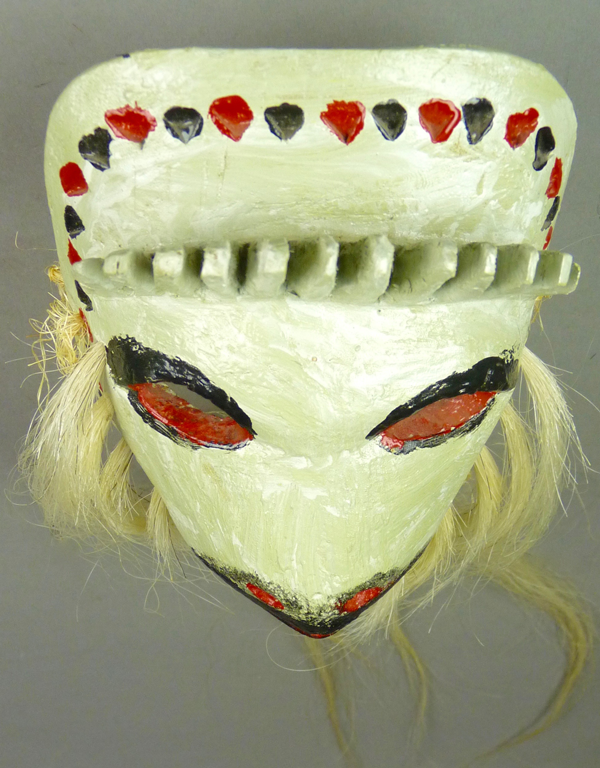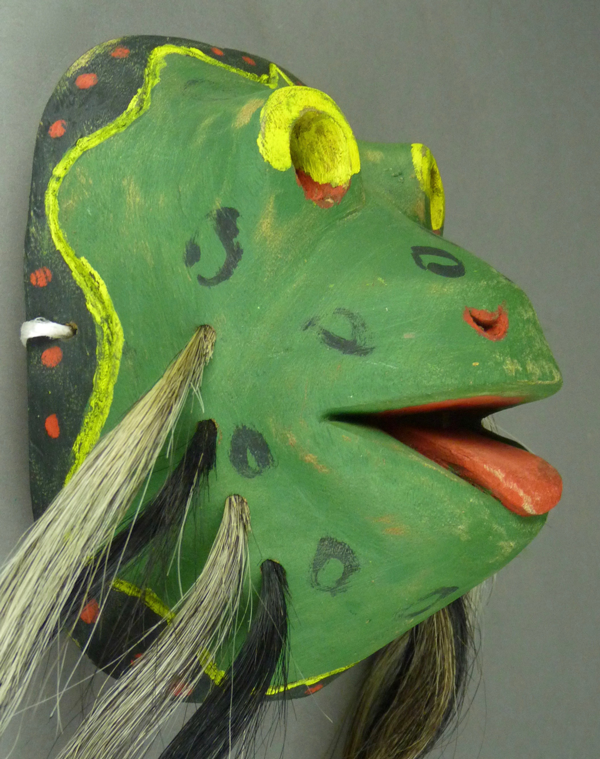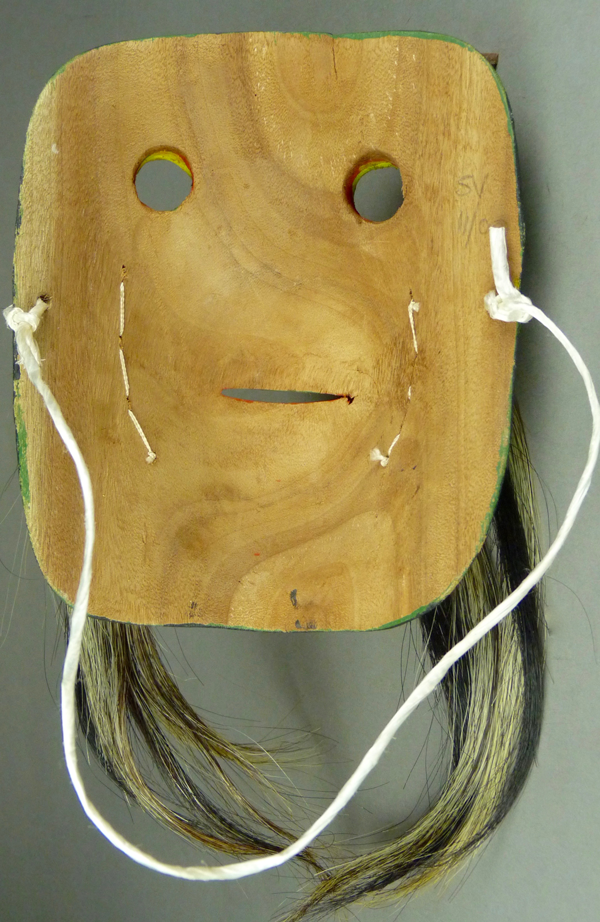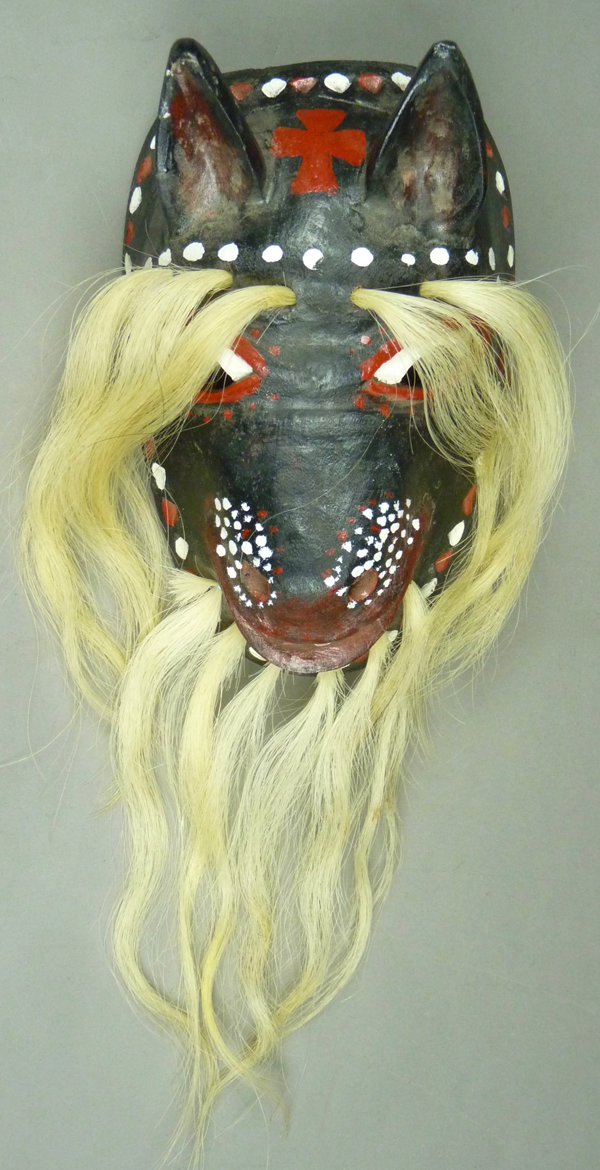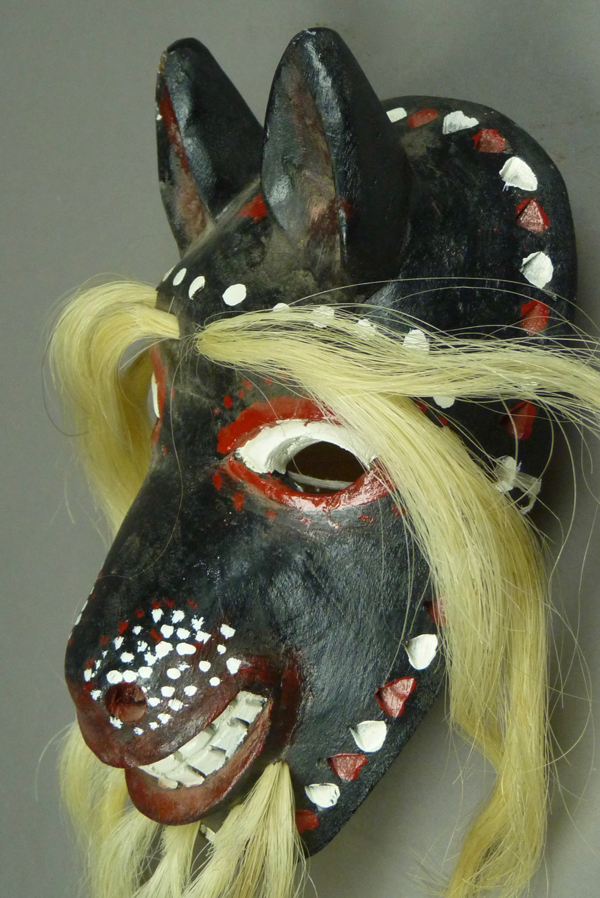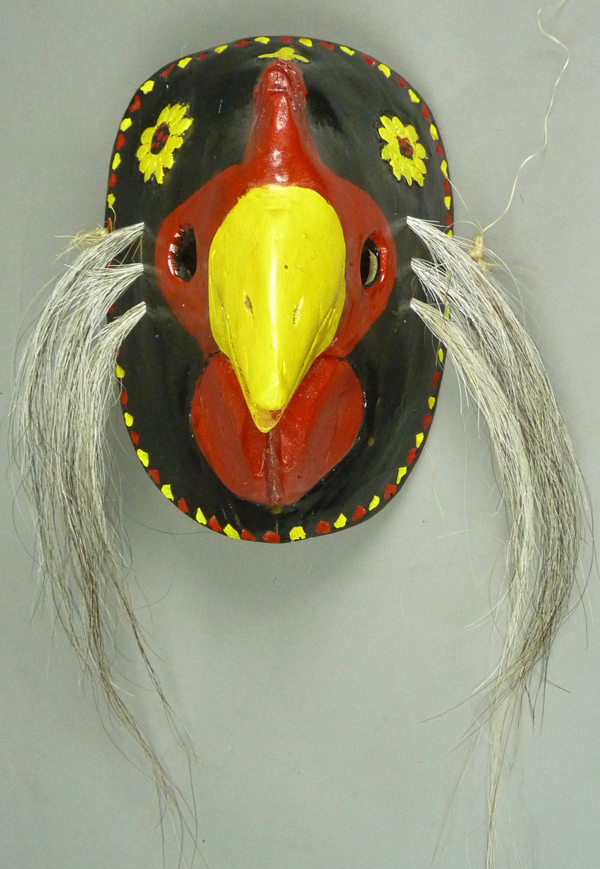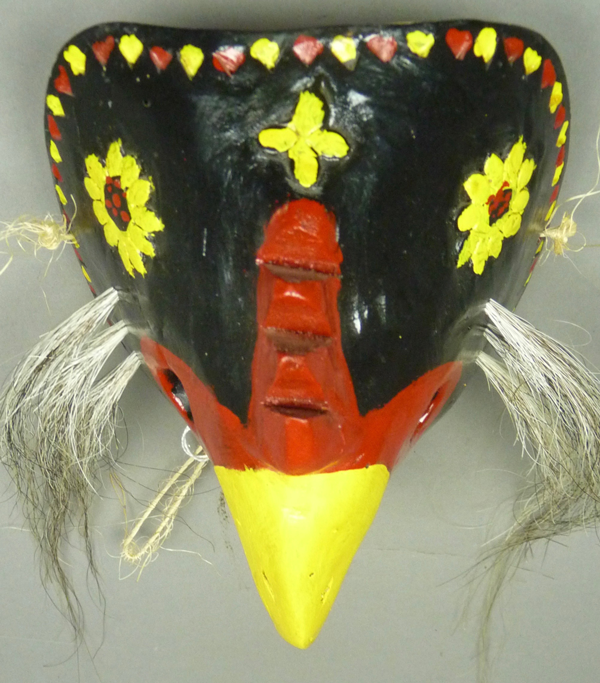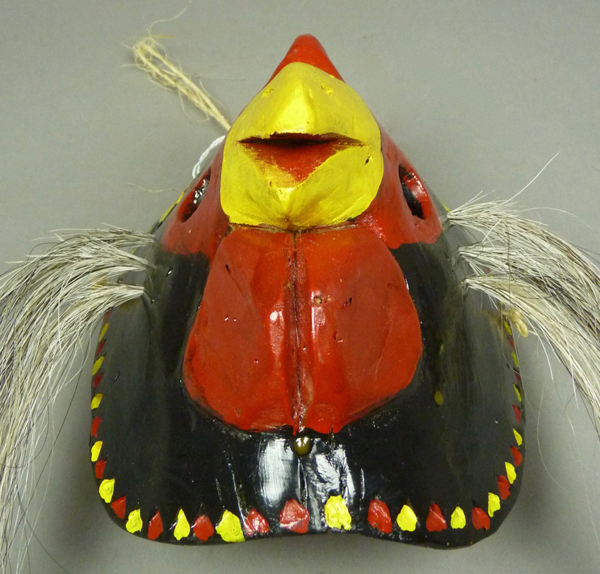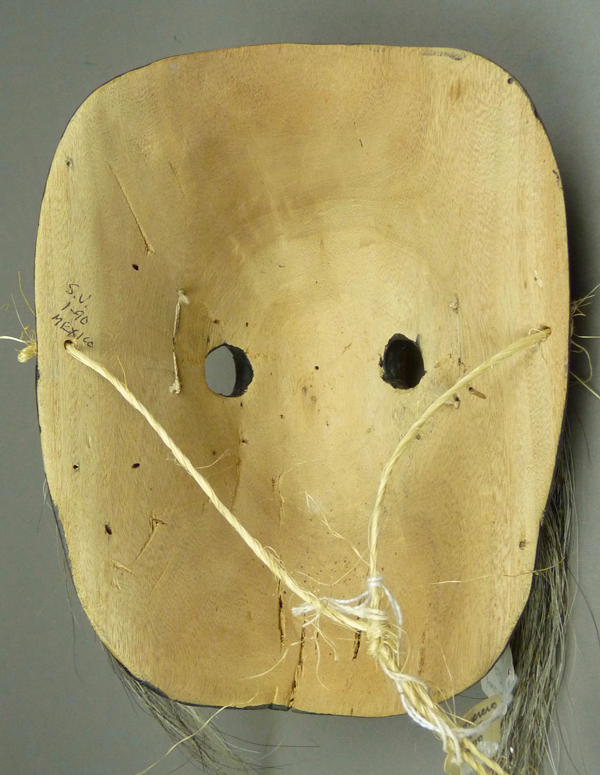This week I will focus on made for sale masks by Saturnino Valenzuela. He made masks for various markets—dancers, collectors, and tourists. Today’s masks were brought up from Sinaloa to Indian Arts Dealers in Southern Arizona by Barney Burns and Mahina Drees, as they were intended to be sold to tourists and collectors. I bought them from those dealers, one by one, because I wanted to collect the full breadth of Saturnino’s work, including traditional and more fanciful designs; you will see both. Saturnino died several years ago, and I display these in his memory.
The first two are traditional in design, although, like some you saw last week, they represent “Apaches,” or North American Plains Indians. I bought this one in July, 2000.
This Apache even has a feather headdress, which is an unusual touch.
This mask has a strong profile.
There is the usual forehead cross.
This mask is 7¼ inches tall, 4½ inches wide, and 3 inches deep.
There is no sign of wear. It was collected in the 12th month, 1988 (XII 88).
The second Apache mask has a beaked mouth, which is a feature found on older Yaqui Pascola masks that were made in the early 20th century (over 0ne hundred years ago). Saturnino deliberately expanded his repertoire by copying features of older styles, apparently from photos and books.
This mask was collected in December, 1987. I bought it in October 2007 from Tom Kolaz.
Here is a side view of the beaked mouth.
This mask is 7 inches tall, 4¾ inches wide, and 2 ½ inches deep.
There is minimal evidence of wear. Collected December 1987.
The next three masks represent wild animals (or animal spirits) from the sacred desert world of the Yaqui and Mayo Indians. In fact this pale green mask represents a young Deer. Such a mask would not ordinarily be danced, and Saturnino has omitted the forehead cross.
This mask was collected in September, 2000.
These small antlers tell us that this is a portrayal of a very young deer.
This mask is 7¾ inches tall, 5¾ inches wide, and 2¾ inches deep.
There is no sign of wear. Collected September, 2000. I bought it one month later. By now you may have noticed that Saturnino carves and smooths every back with great care.
This green mask apparently represents a Horned Lizard, an animal that does live in the Sonoran Desert.
Barney Burns and Mahina Drees collected this mask in August, 1999. I bought it at Native Son Gallery in Tucson in the 2000’s.
Actual Horned Lizards don’t have such a density of horns.
Horned Lizards eat ants.
This mask is 7¼ inches tall, 5 inches wide, and 3 inches deep.
There is no sign of wear. Collected August, 1999.
The third of these masks of animals from the Desert World appears to be a bullfrog. There are of course areas in the Sonoran Desert that have waterholes, including the Rio Fuerte region and oasis areas.
This mask was collected in November, 2000. I bought it in June 2001.
The painted spots on this frog are sketchy.
Frogs use their tongues to catch flies.
This mask is 7½ inches tall, 6 inches wide, and 3½ inches deep.
There is no sign of wear.
The last two masks represent domestic animals that were introduced to the Mayo region by the Spanish. This one appears to be a Burro, although I suppose it could represent a dog.
The lips on this burro are carefully carved.
This forehead cross is painted , but not carved in relief.
This mask is 8 inches tall, 5¼ inches wide, and 2½ inches deep.
There is no sign of wear. This mask was collected in January, 2000 and I bought it in July of that year.
The last of these masks represents a chicken. It was collected in January, 1990. I bought it in March, 1994.
A Chicken Pascola mask is unlikely to be danced. Nevertheless Saturnino has given it a diminutive cross.
This mask is 8¼ inches tall, 6 inches wide, and 4 inches deep.
There is no sign of wear. The mask was carved from wood that had previously been infested by boring insects.
Next week, and the week after that, I will feature older danced masks that were carved by Saturnino Valenzuela. These are absolutely traditional in appearance and with good patina.
Bryan Stevens

